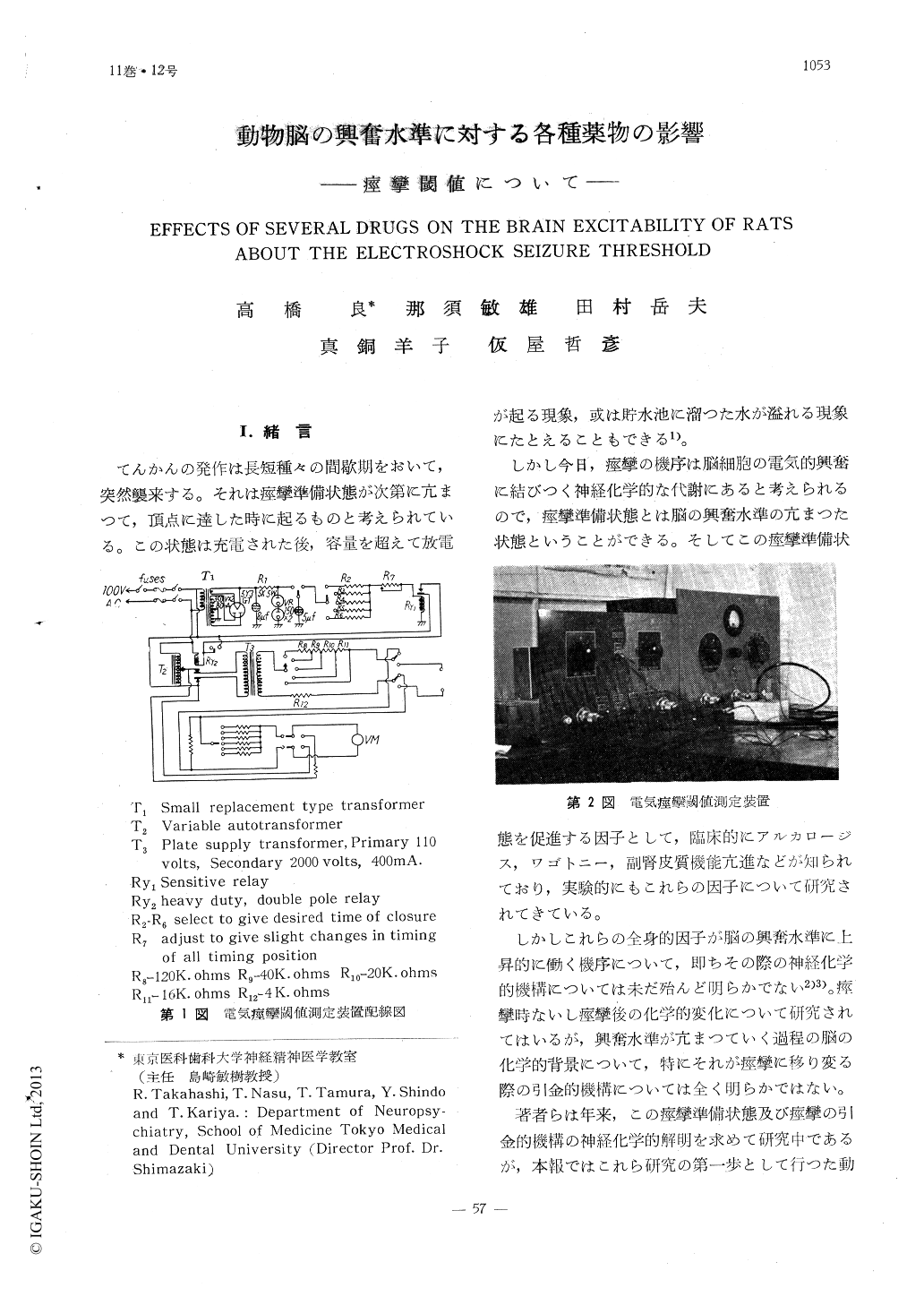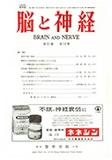Japanese
English
- 有料閲覧
- Abstract 文献概要
- 1ページ目 Look Inside
著者らは動物脳の興奮水準の一つの示標である痙攣閾値(EST)を,ラツテについて測定し,これに対する各種薬物の慢性投与の影饗を検討し,次の結果をえた。
1.純系ウイスター系ラツテのESTは体重と共に増加するが,150g〜200gの体重では15〜20mAであつた。
2.抗痙攣剤であるphenobarbital,diphe-nylhydantoin-Naは共にESTを上昇させるが,DHの方がその作用は弱く,又acetazolamideはESTの上昇をきたさなかつた。
3.ACTHの慢性投与はESTを上昇せしめ急性投与の脳興奮水準の上昇効果と相反する結果であつた。一方hydrocortisoneの慢性投与にはEST下降作用を認めた。
4.chlorpromazine,reserpineはESTの低下作用が著明で,臨床的事実をよく裏書きする結果であつた。
5.アンモニウム塩はESTを下降せしめず所謂アンモニア痙攣説に相反する結果であつた。
6.gamma-aminobutyric acidはEST上昇作用はなく,Vit.B欠乏も3週間ではESTには影響がなかつた。
7.DMAEには明瞭なEST低下作用が認められた。
Studies of brain metabolism during and after the convulsion have been made. How-ever, Too little is known about the neuroche-mical mechanism while brain excitability is increasing, which is especially unfortunate because of the importance of understanding the stage of conversion just prior to convul-sion.
As a first step the authors attempted to determine brain excitability of animals and control brain excitability by several drugs. This report dealt with the determination of one factor of brain excitability, the electro-shock seizure threshold (EST) and the effects of several drugs on it.
The EST was determined by Woodbury's apparatus which uses the electric current (mA) as a indicator of seizure threshold. Effects of drugs administered to rats on EST were tested for three weeks. Drugs were given to the rats subcutaneously or in their drinking water every day for three weeks.
Both phenobarbital (12mg/kg daily) and diphenylhydantoin Na (40mg/kg daily), which are antiepileptic drugs, elevated EST. But the effect of diphenylhydantoin was slower and weaker (+11%) than the effect of phe-nobarbital (+22%).

Copyright © 1959, Igaku-Shoin Ltd. All rights reserved.


